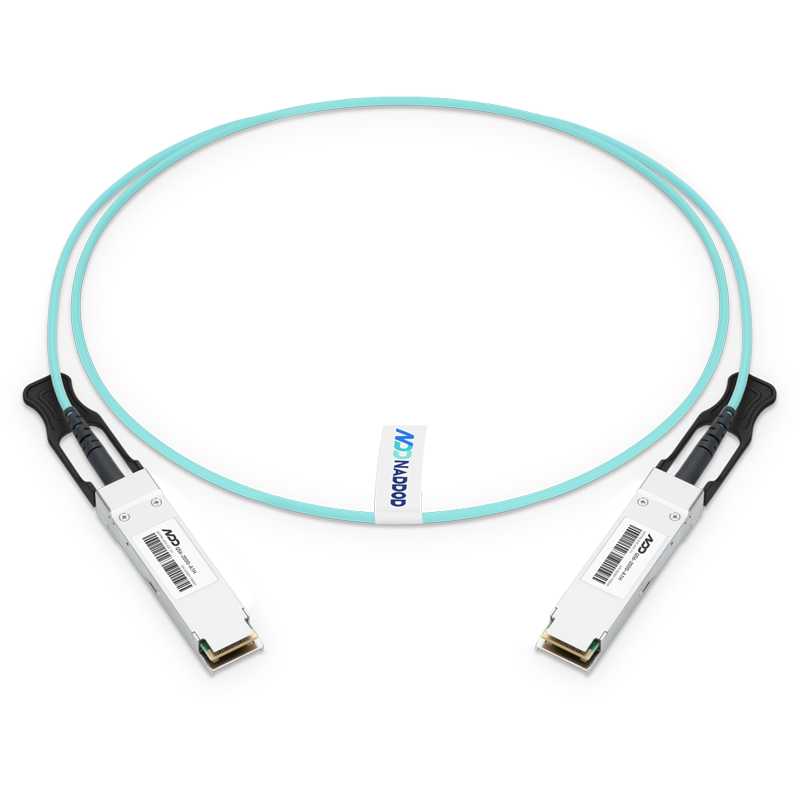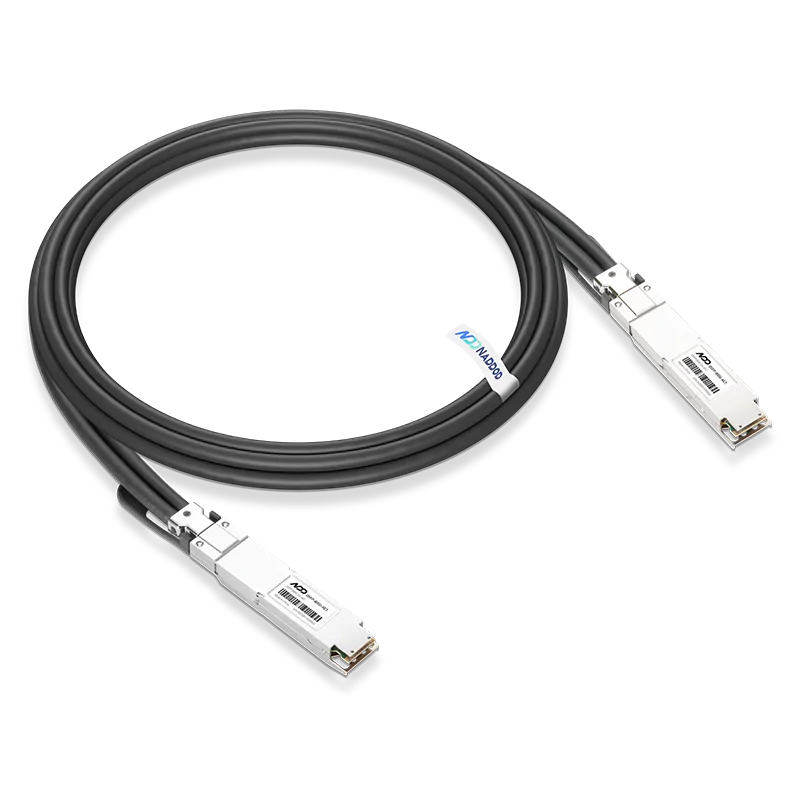In an era marked by rapidly advancing AI computing power, data centers are undergoing transformative upgrades to accommodate the burgeoning demand for bandwidth. A leader in this field, Broadcom, has introduced the industry’s first commercially available 51.2T switch chip, the Tomahawk5. Employing cutting-edge 5nm technology, this chip sets a new standard in efficiency, consuming less than 1W per 100Gbps. This breakthrough positions the Tomahawk5 as the most advanced switch chip globally, capable of handling the most demanding data transmission requirements with its 51.2T single-chip switching capacity and the latest generation of 112G SerDes for high-speed, stable data transmission. This advancement significantly boosts large model training performance, establishing a robust network foundation for AI clusters and core data center switches. It enables businesses to rapidly deploy tailored network solutions, unlocking new levels of productivity in artificial intelligence and advancing the technology further.
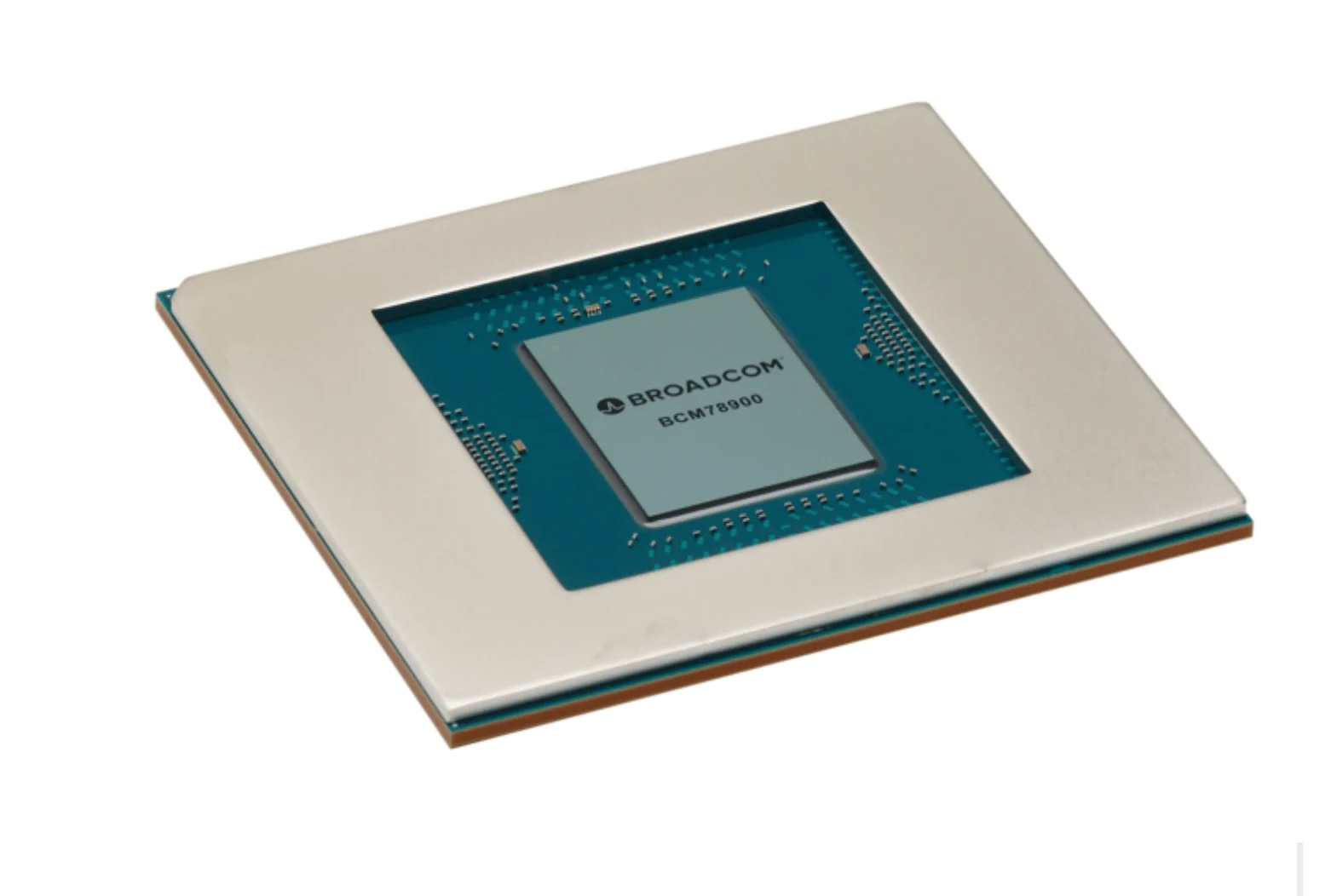
51.2T Switch Configurations: 128 x 400G QSFP112 and 64 x 800G OSFP
The 51.2T switch leverages 512 SerDes, each running at 100Gbps, to achieve a total bandwidth of 51.2Tbps, adeptly managing the increasing pressures of data transmission and processing in data centers. Presently, the switch is available in two configurations: 128 x 400G QSFP112 and 64 x 800G OSFP.
128 x 400G QSFP112: This switch has 128 ports, each capable of 400Gbps, cumulatively providing 51.2Tbps of bandwidth (128 * 400G = 51,200G = 51.2T).
64 x 800G OSFP: This switch has 64 ports, each offering 800Gbps, also achieving a total bandwidth of 51.2Tbps (64 * 800G = 51,200G = 51.2T).
The 128 x 400G QSFP112 switch, known for its compact 4U design and straightforward architecture, has gained early market adoption. While networking capabilities remain consistent between the two configurations due to the dual design of 800G transceivers, the 128 x 400G QSFP112 model is particularly noted for its advanced, mature design which supports efficient data center operations from a deployment standpoint.
Networking with 51.2T Switches
Designed for high-bandwidth, low-latency AI applications, the 51.2T switch supports up to 512 interfaces. This capacity enables a high-performance AI data center network architecture, supporting tens of thousands of GPUs with a mere two layers of Spine/Leaf architecture. The primary application scenarios for the 51.2T switch include 400G/800G interconnects for extensive AI model training and ultra-large-scale 400G interconnects in cloud technology SPINE+LEAF architectures.
64 x 800G Switch: For large AI model training scenarios with 400G/800G interconnects
The Leaf/Spine switch uses 64 x 800G switches, primarily paired with 800G OSFP or QSFP-DD 800G optical transceivers. Depending on the transmission distance between devices, 800G SR8 (50m), 800G DR8 (100m or 500m), or 800G 2xFR4 (2km) optical transceivers can be used to meet the requirements.
128 x 400G Switch: For ultra-large-scale 400G interconnects in cloud technology
When using 128 x 400G switches, the interconnects are primarily paired with 400G OSFP or 400G QSFP112 optical transceivers. Depending on the transmission distance between devices, 400G SR4 (50m), 400G DR4 (100m or 500m), or 400G FR4 (2km) optical transceivers can be used to meet the requirements.
Optical Module Options for 51.2T Switch Networks
Switch-side Optical transceivers
For the 128 x 400G QSFP112 switch, it mainly uses 400G QSFP112 VR4/SR4/DR4/FR4 optical transceivers. For the 64 x 800G OSFP switch, it primarily uses 800G OSFP 2xSR4/2xDR4/2xFR4 optical transceivers.
Network Card-side Optical transceivers
Regardless of the networking method chosen, the network card side uses the same optical transceivers, primarily using 400G QSFP112 SR4, 400G QSFP112 DR4 or 400G OSFP SR4, 400G OSFP DR4 optical transceivers.

NADDOD’s Solutions for High Performance Networks
NADDOD offers an extensive range of high speed 400G/800G optical transceivers, as well as connective cables, crafted with precision to meet the robust demands of 51.2T networks. Our transceivers ensure seamless connectivity across various levels of network switches, supporting high-bandwidth, high-throughput, and low-latency applications vital for today's data-driven environments.
400G Optical Transceivers
|
NADDOD’s Model Number |
Specifications |
|
850nm, 50m, MTP/MPO-12 APC, MMF |
|
|
850nm, 50m, MTP/MPO-12 APC, MMF |
|
|
1310nm, 100m, MTP/MPO-12 APC, SMF |
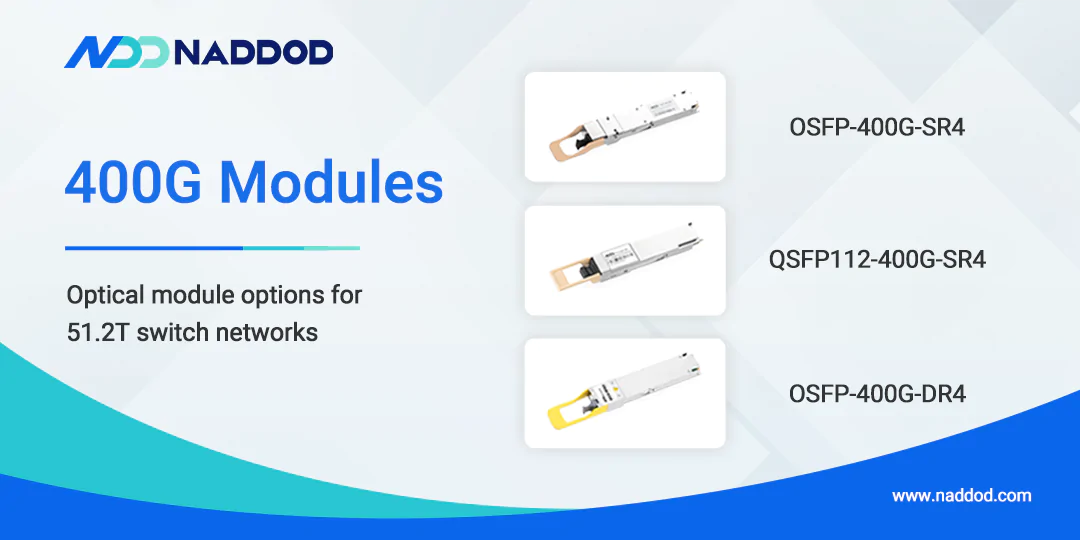
800G Optical Transceivers
|
NADDOD’s Model Number |
Specifications |
|
850nm, 50m, MPO/MTP, MMF |
|
|
1310nm, 500m, Dual MPO/MTP-12, SMF |
|
|
1310nm, 2km, Dual LC Duplex, SMF |
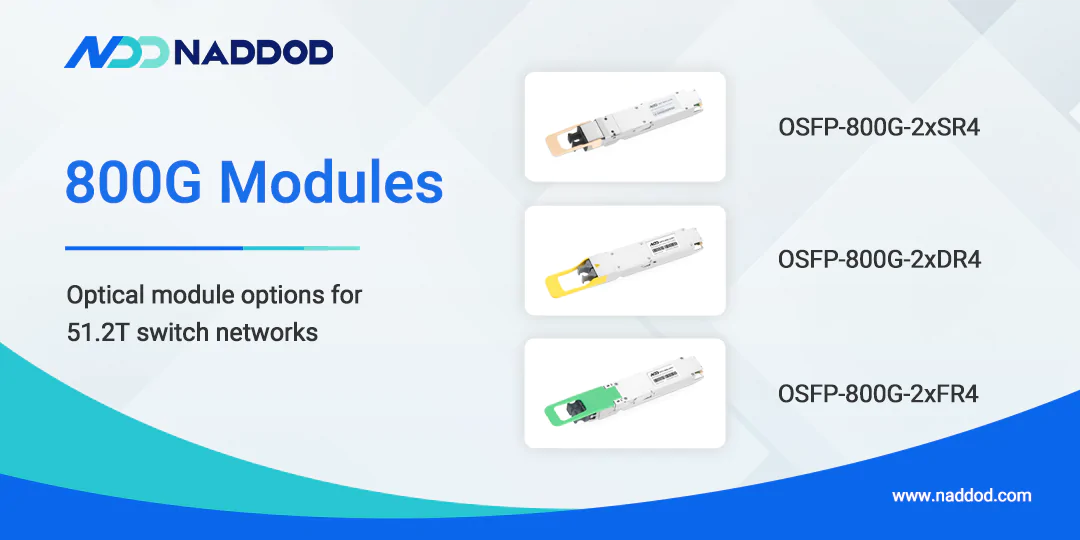
At NADDOD, our commitment to excellence is reflected in our rigorous testing protocols and robust inventory management. Each of our optical transceivers undergoes comprehensive real-world scenario testing and is fully loaded to ensure they maintain link stability under all conditions. This relentless testing confirms their durability and reliability, securing our position as a trusted provider for some of the world's leading data centers, AI clusters, and high-performance computing facilities. Our products are designed to meet the highest standards of bandwidth density and latency reduction while optimizing power consumption for cost-effective, high-performance networking solutions. These high-speed optical transceivers are integral to enhancing network stability, scalability, and reliability, thereby maximizing transmission efficiency and supporting the dynamic network needs of the digital age.

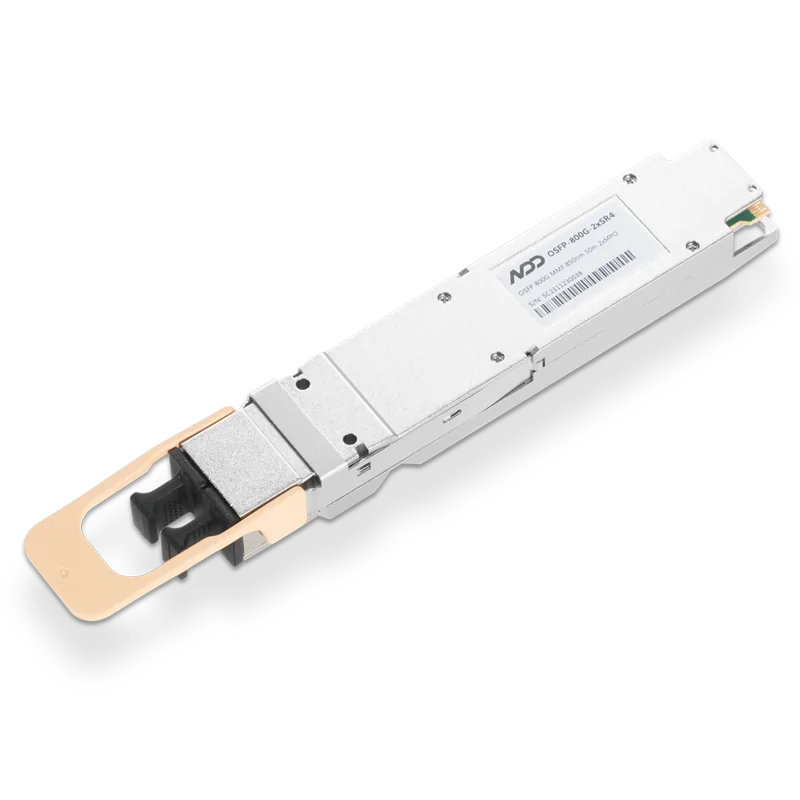 800GBASE-2xSR4 OSFP PAM4 850nm 50m MMF Module
800GBASE-2xSR4 OSFP PAM4 850nm 50m MMF Module- 1800G and Higher Rate Coherent Pluggable Optical Modules
- 2High-Speed Cabling Solutions for the 800G Data Center Era
- 3Elon Musk Begins Training xAI LLM With 100,000 Liquid-Cooled NVIDIA H100 GPUs
- 4Introduction to Open-source SONiC: A Cost-Efficient and Flexible Choice for Data Center Switching
- 5OFC 2025 Recap: Key Innovations Driving Optical Networking Forward





